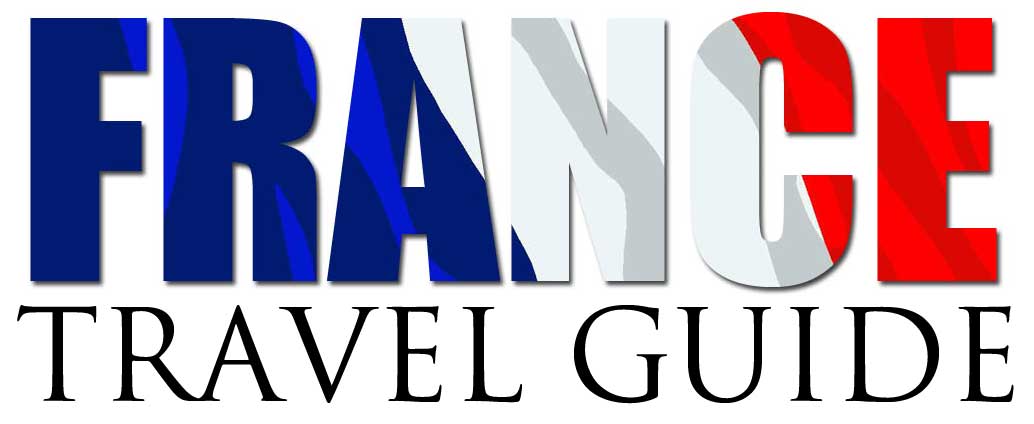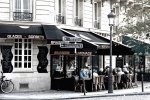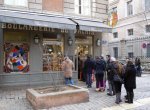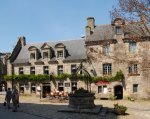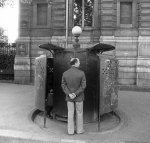haute-savoie (74)
region: Auvergne-Rhône-Alpes
head and shoulders above the rest
In 2006, Haute Savoie – the bit of France to the south of Lake Geneva, or Lac Léman as the French call it – and Savoie re-combined to form Savoie-Mont-Blanc. It’s a neat trick and makes much of the ancient and fiercely proud traditions of the larger region and blags some of the kudos of Western Europe’s highest mountain. That few people ever aspire to reach the top of Mont Blanc – it’s a three-day climb of significant difficulty at best – is irrelevant, you only need to come and look at it.
Chamonix is bright, breezy, just a little wacky, even a little tacky, and crammed with ski poseurs and wannabe alpinistes, among whom I once numbered myself. But you really can’t help loving the place. This is part of the fabled ‘Savoy’ of Grand Tour fame when wealthy Georgians, Oxford undergraduates and assorted degenerates with nothing better to do would take months to tour Europe amusing themselves and planting their views and ideology on the natives.
But the people of Haute Savoie had minds and ideology of their own, as they do now, not least in matters of cuisine. Today as you strut the streets of Chamonix – don’t stroll, that’s too plebeian – clumping around in inflexible ski boots and impaling anyone rash enough to get within striking distance of your ski poles, you are assaulted by menus ‘Savoyardes’ at every turn. The culinary standards are excellent, it has to be said, and the local inventiveness beyond reproach; they make the most of what they have most of, and that means cheese and spuds, which find their way into at least four permutations of the very filling tartiflettes, or fondue and raclette, which are stringily messy but hugely delightful ways of consuming cheese, and all the more agreeable if washed down with a bottle of Gamay. Then there is that other spécialité Savoyarde, choucroute, which is basically what they do with cabbage when they can’t think of anything worse to do with it.
In spite of its prostration before the altar of winter sports, Chamonix, and more generally, the Arve valley from the Col des Montets and the eminently likeable town of Argentière, south to Les Houches after which the valley wriggles through a geological constriction, is just one attractive sight after another. It is remarkably easy to bump into people here, because everyone seems to be gazing upwards as they walk, taking in the surrounding mountains. Cable-cars, of one form or another, whisk you up above the valley, where a whole new world of jagged pinnacles (aiguilles) awaits, below which traversing paths (balcons) at varying heights allow even the average walker to get a real taste of the mountains. Throw in the ancient and arthritic train service that grunts upwards to Montenvers, from where, when you’ve finished admiring the stunning scenery, you can descend to enter the very heart of the Mer de Glace, a living, moving, grinding glacier of huge but diminishing proportions, and the whole experience is simply exhilarating; just as it is meant to be. And for the really intrepid, and warmly clothed, there is the prospect of a two cable-car hoik up to the Aiguille du Midi (3,800m/12,467 feet), 2,800m (9,186 feet) above the valley, from where you can take another, much smaller télécabine above the Vallée Blanche to the Italian frontier at Pointe Helbronner, with its superb view of Mont Blanc. If that doesn’t quite appeal – and you can develop altitude sickness even at 3,800m – then take the Brévent cable car to the half way stage, Plan Praz, and enjoy lunch on the terrace of ‘Le Bergerie’; you won’t find a better view from a restaurant anywhere.
But Mont Blanc and Chamonix does not Haute Savoie make. The ancient capital of the region known as Chablais, lying immediately south of Lac Léman, is Thonon-les-Bains, renowned like its rather better known sibling Evian-les-Bains, for thermal spas and mineral water that is said to have curative properties for those suffering with kidney ailments.
Thonon has had an uninvited decline in tourist fortune in recent years, for no particular reason, but remains a popular – and therefore expensive – place to set up home, largely because of the propensity of French people who work in nearby Geneva to use Thonon as a dormitory town, an attraction all the more enhanced when in May 2007 a high-speed boat service was introduced between Thonon and Geneva. Evian, poetically known as ‘The Pearl of Lake Geneva’ in contrast, operates a boat service across the lake to Lausanne, although Evian clings rather more to its glorious past as a major spa resort, with opulent buildings overlooking the lake. Thonon just gets on with life, and is all the better for it.
Lake Geneva is huge, and it is easy to see why people would want to live along its shores. It covers 580 sq km (224 sq miles), and reaches a depth of 310m (1,017 feet). Such a large inland expanse of water produces its own micro-climate which makes the lake shore surprisingly mild for much of the year.
Both Thonon and Evian are curious, attractive and enthralling places to visit, but the further west you go, towards Annemasse and Geneva, the worse things become; this part of France is heavily urbanised and, it has to be said, unattractive. The exception is Yvoire, which occupies a superb position at the edge of the promontory that separates ‘Petit Lac’ (to the west) from ‘Grand Lac’. The medieval qualities of Yvoire are very much still in evidence, as are the abundance of flowers that have given the town the distinction of being one of only two towns in Haute Savoie to be catalogued among the ‘Most Beautiful Towns in France’, which, when you start exploring the hinterland, makes you wonder what the criteria might be for ‘beauty’: Haute Savoie oozes beauty, unrelentingly (except around Annemasse).
For real beauty, head south, into the mountains that flank the Abondance valley, or around Morzine and Les Gets. This is a wondrous landscape, a place of rivers, perched villages, mountains, waterfalls and the wooden chalet homes more usually associated with Switzerland. But, wood is available in large quantities and is a cheaper building material than rock or man-made brick. In any case, the sight of hillsides dotted with beautifully designed chalets, surrounded by the ubiquitous cattle, is quite unlike any other part of rural France.
Virtually all the villages between Thonon and Taninges to the south base their economy on winter skiing, but are no less inviting in summer when the télécabines still take you up onto the valley sides for a better view of the mountains. St Jean d’Aulps is perhaps less evidently ski-linked. Here you’ll find the remains of a 12th-century Cistercian abbey.
The township of Morzine and neighbouring Montriond lie in a vast mountain amphitheatre flanked by the Pointe de Ressachaux and the Pointe de Nyon. The locals around Morzine don’t hang up their skis until the very last vestige of snow has gone, and the gentle slopes around the town make this a perfect place for anyone who prefers a more relaxed approach to their skiing. For those skiers relaxed to the point of having left the skis at home, the shores of Lac Montriond are purpose-designed for chilling out with a chunk of Abondance cheese, a baguette and a bottle of something agreeably alcoholic.
Further south, Les Gets is another, more modest, ski resort, but home to a wonderful museum of mechanical music. The road continues southwards to Taninges, unpretentious in itself, but at a crossroads. To the east, you drive along the Giffre valley into ever more dramatic terrain first to the town of Samoëns, and then on to the very agreeable cul-de-sac that is Sixt-Fer-à-Cheval, one of the ‘Most Beautiful Villages in France’.
Samoëns lies in a wide glacial valley, each of its nine scattered hamlets the sort of place that makes you want to up sticks and move out today; each with a modest chapel surmounted by an onion-shaped spire. Yet in spite of the increasing spread of Samoëns, and the abundance of timber as a building material, the valley has retained a good number of traditional stone houses. The stonemasons of Samoëns have something of a reputation to uphold, having been at work in the Giffre valley since 1659.
Beyond Samoëns, the road leads to Sixt-Fer-à-Cheval; it’s not as pretty as other ‘Most Beautiful’ towns in France, but its setting beneath the fabulous Cirque de Fer-à-Cheval, simply can’t be bettered, as a walk along the Fond de la Combe will demonstrate.
Equally attractive, heading into Faucigny, are the Vallée Verte, which extends south from Thonon, over the Col de Cou and onwards with the Mesonge river through Boëge. Or you can try the supremely beautiful string of villages that reach from Reyvroz, through Vailly and Bellevaux, over the Col de Jambaz and down to Mégevette, St Jeoire and Marignier. How some of those villages are not considered beautiful is a mystery.
As you go south, Faucigny combines with Genevois to flank the Arve river, fed by waters from some of Western Europe’s greatest glaciers. Here, too, are yet more adorable towns and villages of mainly wooden chalet-type houses; places like St Gervais-les-Bains, Megève and Annecy.
St Gervais occupies quite an open sight given the constricted nature of the countryside. The town has a long reputation for its hot springs, and is today regarded as the main health spa around the Mont Blanc massif. Megève, by contrast, is a more chic place, more openly given to those who love to ski and walk. The less demanding slopes around the town are for those who want more relaxed skiing, served by a plethora of fine chalet-restaurants and ski lifts. In summer, walkers will find the mountains offer superb walking, with the most excellent panoramas.
Recent Articles
-
French Food and Drink - No BS Guide for lovers of Food, Wine, Liqueurs
Aug 28, 19 03:18 AM
Our guide to French food and drink for those who love traditional French food along with our no BS guide to understanding French wine and liqueurs
-
Things To Do In Carcassonne The Ultimate Tourist Guide
Aug 24, 19 06:26 PM
The ultimate tourist guide to things to do in Carcassonne when you visit this wonderful town in Aude France. Discover the places to go and see in Carcassone.
-
Lyon Old Town Guide to Vieux Lyon
Aug 18, 19 07:48 AM
Your complete guide to Lyon old town otherwise known as the Vieux Lyon. Don't miss this amazing part of the city if you're visiting Lyon in France.
-
18 French Villages You Must Visit Most Beautiful Villages in France
Aug 17, 19 06:31 AM
Our guide to the 18 most beautiful French villages you simply must visit. Loads of info, photos and facts in our ultimate villages in France tourist guide
-
What a Pissoir - The True Story of France's Unique Urinals
Aug 13, 19 03:47 PM
Is there anything more French than a pissoir? Sadly on the decline nevertheless the pissor is an endring image of the country. This is their story
